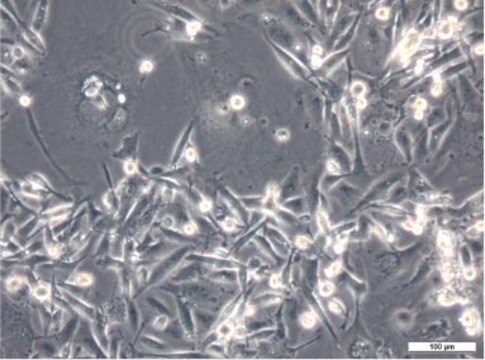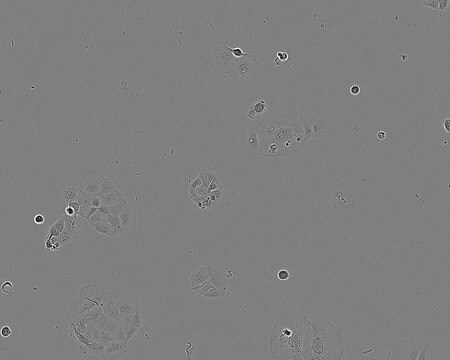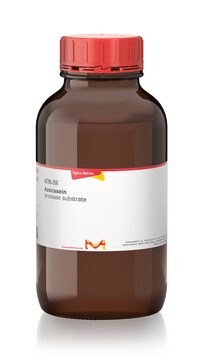ZR-75-1
NOTE: Both the cell line and DNA from the cell line may be available for this product. Please choose -1VL or VIAL for cells, or -DNA-5UG for DNA, 87012601, human breast, Epithelial
About This Item
Productos recomendados
biological source
human breast
packaging
tube of 5 μg 87012601-DNA-5UG
pkg of vial of cells 87012601-1VL
growth mode
Adherent
karyotype
2n = 46, modal no. 72
morphology
Epithelial
products
Not specified
receptors
Reported to express the oestrogen and progesterone receptors
technique(s)
cell culture | mammalian: suitable
relevant disease(s)
cancer
shipped in
dry ice
storage temp.
−196°C
Cell Line Origin
Cell Line Description
Application
DNA Profile
Amelogenin: X
CSF1PO: 10,11
D13S317: 9
D16S539: 11
D5S818: 13
D7S820: 10,11
THO1: 7,9.3
TPOX: 8
vWA: 16,18
Culture Medium
Subculture Routine
Other Notes
Elija entre una de las versiones más recientes:
Certificados de análisis (COA)
It looks like we've run into a problem, but you can still download Certificates of Analysis from our Documentos section.
Si necesita más asistencia, póngase en contacto con Atención al cliente
¿Ya tiene este producto?
Encuentre la documentación para los productos que ha comprado recientemente en la Biblioteca de documentos.
Nuestro equipo de científicos tiene experiencia en todas las áreas de investigación: Ciencias de la vida, Ciencia de los materiales, Síntesis química, Cromatografía, Analítica y muchas otras.
Póngase en contacto con el Servicio técnico




